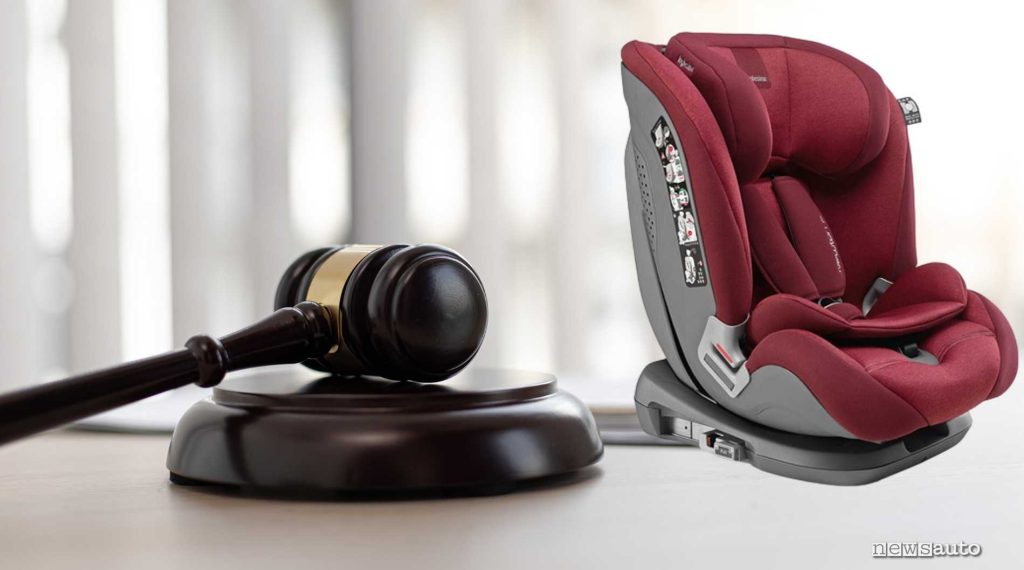In force on new european regulation UNECE R129, known as: “i-Size”, which sets higher safety criteria for the manufacture and sale of car seats for children.
Child car seats: here’s what the new law provides
The new law regarding car seats came into force on 1st Septemberto make children safer when travelling in the car.
The ECE R129 standard, which we all know as: “i-Size”, has issued new classification criteria for child seats, which will no longer be classified based on weight, but based on height. This will ensure greater reliability on child safety.
The new regulation also specifies the obligation to fit a rear-facing child seat until the child reaches 15 months of age, or until 75 cm in height.
THE’Article 172 of the Highway Codeestablishes the following:
“… Children no taller than 1.50 m, when travelling in public transport vehicles or in vehicles used for chauffeur-driven rental, need not be secured to the seat with a child restraint system, provided that they do not occupy a front seat and are accompanied by at least one passenger who is at least sixteen years of age…Children may not be transported using a rear-facing safety seat on a passenger seat protected by a front airbag, unless the airbag has also been deactivated automatically in an appropriate manner… All occupants over the age of three of vehicles in circulation in categories M2 and M3 must use, when seated, the safety systems with which the vehicles themselves are equipped. Children must be secured with child restraint systems, if present on vehicles in categories M2 and M3, only if they are of a type approved in accordance with paragraph 1…“.
Furthermore, Article 172 bis – with the introduction of the law on anti-abandonment equipment – states that it is mandatory to equip yourself with anti-abandonment equipment when transporting children under 4 years of age in a vehicle.
Child car seats: what changes with the new rules
Until the new regulation came into force, there was UNECE R44/04 (in force since 2007), which took into account the weight of the child and divided child seats into five categories, ranging from less than 10 kilograms to more than 36 kilograms (including child seats without backrests, i.e. booster seats, and other devices, such as so-called “car seats”).

The new UNECE R129, from 2013 – which came into force only on 1 September 2024 – definitively replaces the aforementioned one (ECE R44). Therefore, as mentioned above, Car seats are now classified solely and exclusively based on the child’s height. However, it also introduces the obligation to install child seats in the rear-facing position until the child reaches 15 months or 75 cm. This provision is intended to protect children in the best possible way, as studies have shown that child seats installed in the rear-facing position significantly reduce the risk of serious injury in the event of an accident.
The new models of child car seats
THE child seats approved in accordance with ECE R129 regulationthey were rated as safer than those installed according to the previous ECE R44/04 regulation. This is because they provide better protection for the child’s head and neck in the event of a collision. The new seats will have to pass the front, rear and side crash test.
The new child seats are divided according to the height of the child, while the models are divided into two categories:
- i-Size less than 100cm (under 18 kg).
- i-Size 100-150cm (15-36 kg).
In both cases, it has been made mandatory that the seat must be installed against the direction of travel, and the use of the Isofix system is required. The latter is an international standard system for securing child seats to car seats. Designed to ensure maximum safety when traveling with children in the vehicle, this system has changed the way of securing child seats, as it allows the seat to be connected directly to the vehicle chassis without the need for a seat belt, thanks to the two attachment points on the seat itself, and a third point that would be an anti-tip device.
What will be the fate of the previous seats?
From 1st September it will no longer be possible to buy or sell child seats approved according to the old legislation. In any case, those who already own them are not obliged to replace them, to be fair, the law says that they can continue to use them indefinitely.
Fines are expected for those who do not respect the rules
The Highway Code provides that those who travel by car with a child, without a suitable seat or even without a seat at all, will be fined finedThe amount of the fine amounts from 80 to 323 eurosin addition to the 5 points deducted from your driving licence of driving. If the infringement is repeated within two years of the first, the accessory sanction of suspension of the license is added, from a minimum of 15 days to a maximum of 2 months.
#Child #car #seats #iSize #law